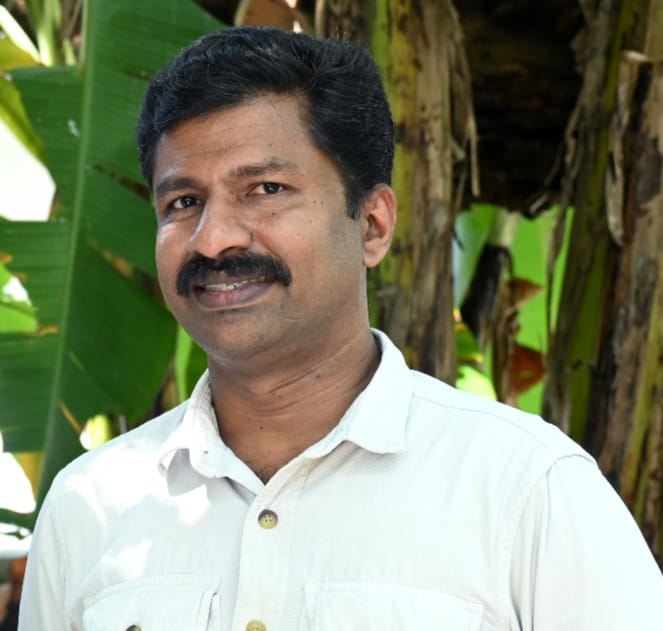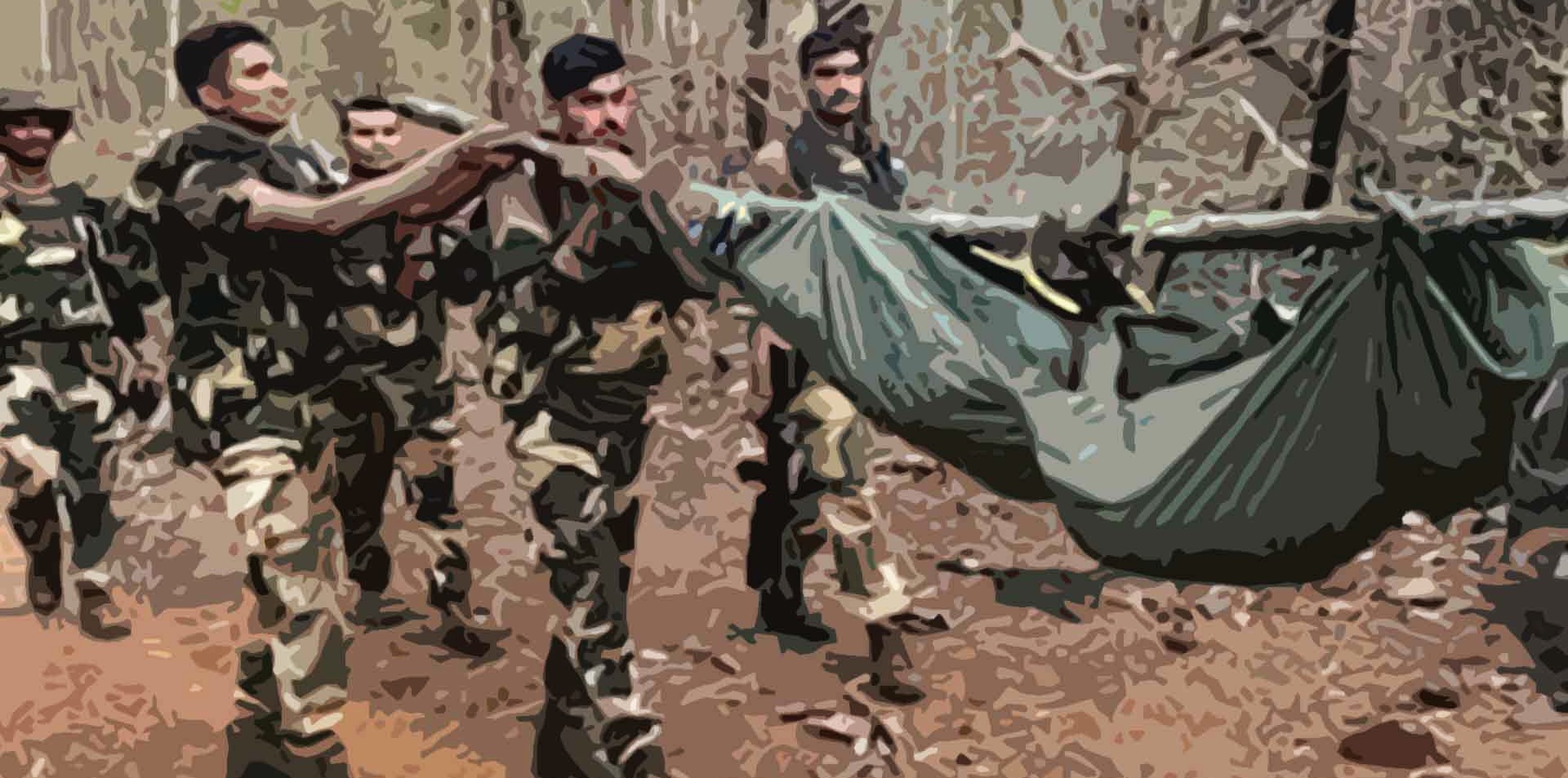
Operation Kagar: Crushing Tribals for Corporate Plunder
Bela Bhatia is a writer, researcher, and human rights lawyer practicing in the district courts of Bastar division, Chhattisgarh. She holds a doctorate from Cambridge University for her research on the Naxalite movement in central Bihar and has long studied the protracted conflict between the Indian state and the Maoists. Bela has served as an Associate Fellow at the Centre for the Study of Developing Societies (CSDS), Delhi, and as an Honorary Professor at the Tata Institute of Social Sciences (TISS), Mumbai. Notably, she was among the 121 Indians reportedly targeted by Israel’s Pegasus spyware. She came to Kerala to participate in the Resistance Convention and speaks about the ground realities in Bastar in the context of Operation Kagar, the central government’s intensified campaign against the Maoists.
Could you briefly describe what Operation Kagar is and how it unfolded on the ground?
Soon after the BJP came to power in Chhattisgarh in December 2023, Home Minister Amit Shah visited Raipur and declared that the Maoists would be wiped out before long. We began hearing about Operation Kagar and military operations became more frequent. It became evident that the counterinsurgency had intensified significantly after his visit.
What changes have you observed on the ground since the announcement to eliminate the Maoists?
Since January 2024, encounters became much more frequent, many of them fake. These continue to this day. Unlike Operation Green Hunt, Operation Kagar is time-bound. The stated deadline to wipe out the Maoists is 31 March 2026. This time, both the central and Chhattisgarh state governments are led by the BJP, which adds to the coordinated intensity.
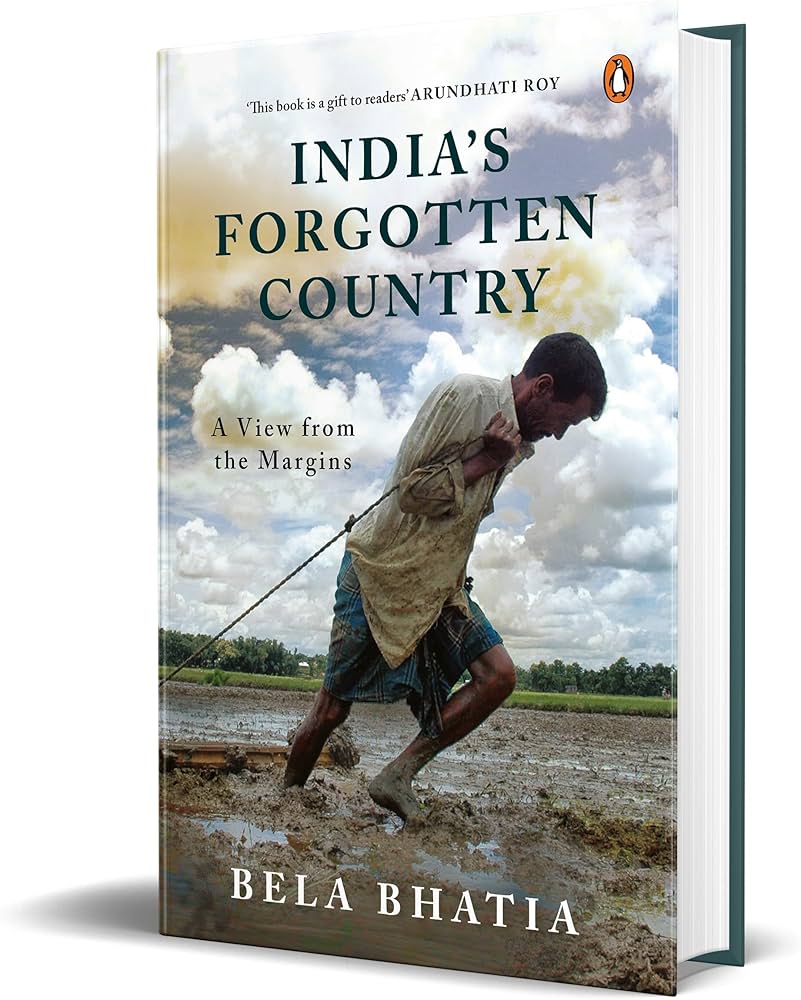
Which regions and communities have been most affected by the operation?
Maoist strongholds in what was earlier the undivided Dantewada district in south Bastar which includes the present-day Bijapur, Dantewada, and Sukma districts and the Abujhmad region of Narayanpur and parts of Kanker districts in the north, have seen intensified action. The main Adivasi community residing in these parts is the Gonds. While Telangana, Odisha, and Maharashtra are also affected, the primary focus of the operation is in Bastar and Jharkhand.
How has the state justified Operation Kagar, and how does that compare to what you’ve seen on the ground?
The state claims Maoists are anti-development and hinder progress, especially in areas marked for mining. They are portrayed as terrorists. The official narrative completely erases their political agenda, such as demands for democratic accountability and resistance to corporate exploitation.
How has Operation Kagar affected everyday life for Adivasi communities in Bastar?
The lives of Adivasi residents living in the conflict zone have been severely affected in every way. Today, they are not safe anywhere. They can be picked up any time on mere suspicion of being part of the Maoist movement and incarcerated in false cases under a draconian law like the UAPA, taken into police custody for questioning for days, and even made to forcibly “surrender.” Many Adivasis have been killed in fake encounters while collecting minor forest produce in the forests like mahua or even close to their fields while collecting tendu leaves, as happened in Pidiya and Itavar villages of Bijapur district on 10 May 2024, when ten Adivasi civilians were shot at and killed while six others sustained bullet injuries. The police said that all of them were Maoists killed in an encounter, while villagers maintained that there was no encounter that day. One of the six injured was a 14-to 15-year-old boy who had sustained multiple bullet injuries. He lay on a cot when I visited his village. Family members were too scared to take him to the primary health centre for fear that the police would label him as a Maoist too and arrest him. More than a hundred civilians have been killed in similar fake encounters since the start of Operation Kagar.
Maoist-linked village committees, known as Sangams, consist of unarmed villagers who help Maoists with food and similar support when they visit those parts. Even these roles are now criminalized, with many falsely implicated.
Frequent instances of death and incarceration besides everyday instances of harassment and surveillance are common. There are more than 400 security camps in Bastar. These camps can be found at intervals of every three to five km in the interior regions. Everyone gets routinely stopped and questioned. In many instances, mobile phones have been confiscated without giving a receipt; besides the cost of the mobile, there is always a fear that false evidence can be planted and the person concerned arrested under false charges.
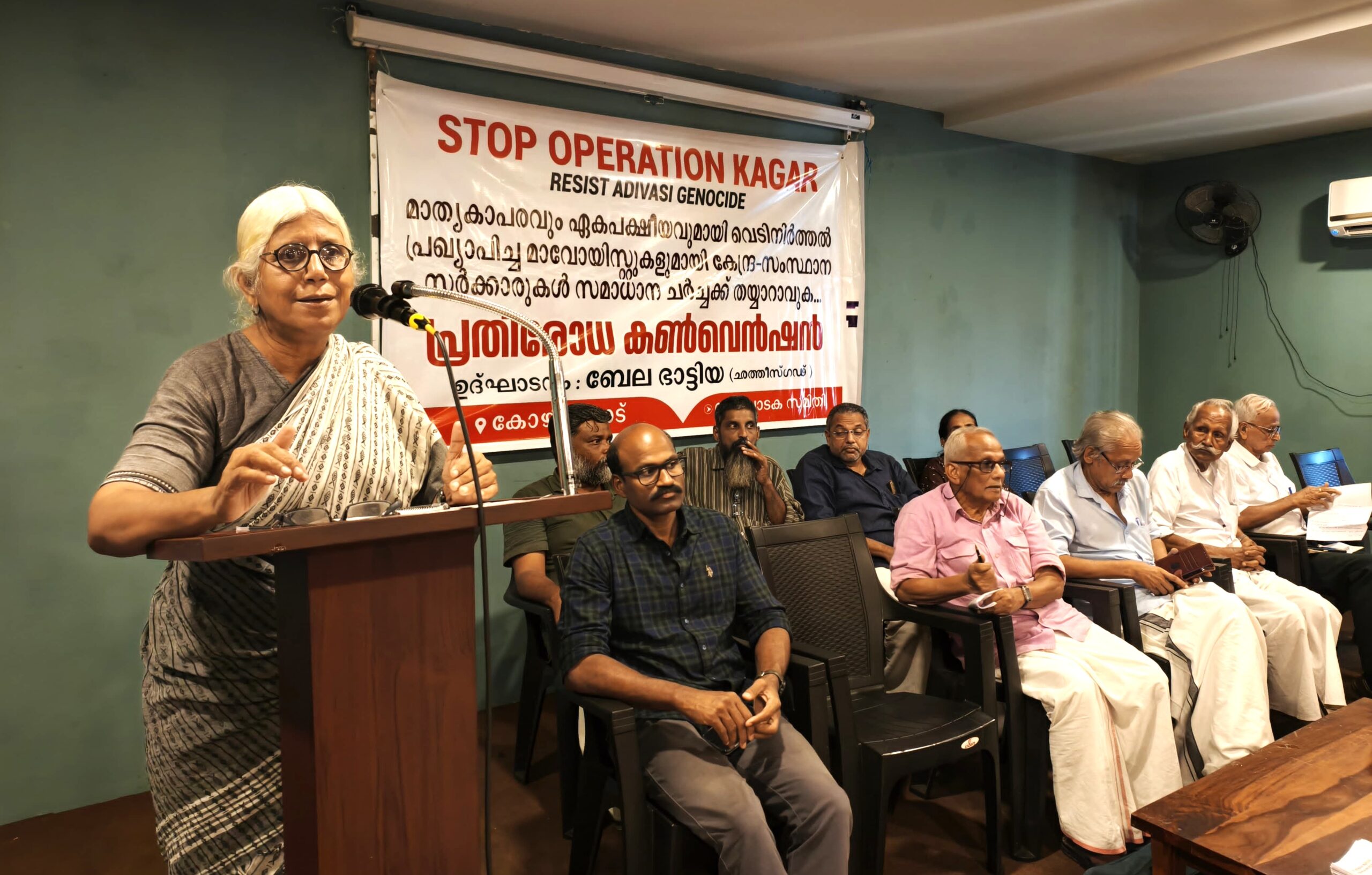
Do ordinary tribal people know about the Maoists’ declared readiness for a ceasefire and Operation Kagar?
Some who keep up with the news do but most people are simply trying to survive the onslaught, the arrests, and surrenders. After the ban on the Moolvasi Bachao Manch in October 2024, open protests have come to a standstill. Sarpanches and similar local leaders who earlier, out of necessity, maintained contact with both the government and Maoists are now under suspicion from both sides.
What about PESA, which guarantees autonomy to tribal communities in Fifth Schedule areas?
Though all seven districts in the Bastar Division are notified as Scheduled Areas under the Fifth Schedule of the Indian Constitution, the safeguards that were promised to Adivasis have not been realised. For instance, even though PESA was enacted in 1996, Rules in Chhattisgarh were made only in 2022, rendering PESA non-functional for more than two decades. This has harmed Adivasi interests seriously since, in the interim, the government has continued to take over land for various purposes without due consultation with the Adivasi population through gram sabhas, a basic requirement under PESA. In Maoist strongholds, most gram panchayats exist on paper. Fearful of coming under pressure from the Maoists, panchayat functionaries choose to live in towns and are rarely found to be active in the panchayat they are responsible for. Even government functionaries like anganwadi workers may continue to draw salaries while remaining absent from the anganwadi. Government schemes remain largely unimplemented in areas under Maoist influence, where the Maoists run a parallel Janatana Sarkar.
Why is there so little national media coverage of Operation Kagar despite its scale?
The reason why this is so is applicable to the country as a whole. Increasingly, with media houses being owned by corporate conglomerates or having deep business affiliations with industrial groups news gathering and content have come under control. Reportage of political issues has become a challenge. Those who have stuck their necks out have faced pressure like the BBC in 2023.
Even though large-scale and incisive media coverage of politically sensitive news remains limited national dailies like Hindustan Times, The Hindu, The Indian Express, and The Times of India in English and Dainik Bhaskar, Patrika, Navbharat, Nai Duniya and a few others in Hindi do cover the region. Besides newspapers, there are web-based portals and YouTube channels run by independent journalists that cover the ground issues in the region.
What has been the response of courts or human rights bodies to complaints from the region?
People in the region have great difficulties in getting access to the higher courts due to the distance and expense involved. Despite these constraints, human rights organisations and activists have taken many instances of violations to the High Court, the Supreme Court, and the NHRC. Inordinate delays in hearing the matters that were ultimately disposed of have been the usual story. Even a high-profile case like the one against the Salwa Judum, in which the SC had declared Salwa Judum as illegal in 2011, was disposed of in May this year without a proper hearing. In two notorious incidents of Bijapur district—in Sarkeguda village in 2012 and Edesmetta village in 2013— in which 17 and 8 villagers were killed respectively during seed festivals, a judicial enquiry commission led by Justice V.K. Agarwal found both to be fake encounters in which children were also killed. But even though the reports were tabled in the State Assembly, no action followed. Even the first basic step of filing an FIR has not been done till now.
Recently, a writ petition was filed in the High Court against the banning of Moolvasi Bachao Manch but it was dismissed. Now, there are efforts by a group of lawyers to raise the issue in the Supreme Court.
Have lawyers, activists, or journalists faced intimidation while Operation Kagar is underway?
Yes, during Operation Kagar too, as during previous Operations, many have been stopped from reaching incident sites. We have had to often take longer routes, face repeated checks, questioning, and in some instances even threats. Security forces always claim this is for our safety, but we know that the underlying reason is to stop people from reaching these sites.
What kind of legal or civil support do affected communities need most urgently?
During times of crisis, villagers need help to navigate the system. This is mainly because of low literacy levels and exposure to the outside world, besides the fact that few in the village speak Hindi. For instance, when villagers get picked up by the police, family members need help to find them. Their whereabouts may remain unknown sometimes for days, causing much anxiety. So many times, you find a large number of women (often with children) outside police stations. Guards may not allow them to enter, and even if they gain entry, the police official may not part with the necessary information. After an incident in which a large number have been killed as well as picked up on the same day as happened in the Pidiya and Itavar case mentioned above, family members walked a long distance or came in tractors to the district headquarters anxious to know whether their loved one was among the dead or those taken in police custody for questioning. It is in times like these that relatives reach out to people like me for help, and we assist in whichever way we can. Likewise, after killings in fake encounters, relatives need help to get the dead body, file a police complaint, or even petition in a court. Relatives of those imprisoned also need assistance of various kinds besides legal representation. Simply put, whenever something untoward happens, people need help urgently.
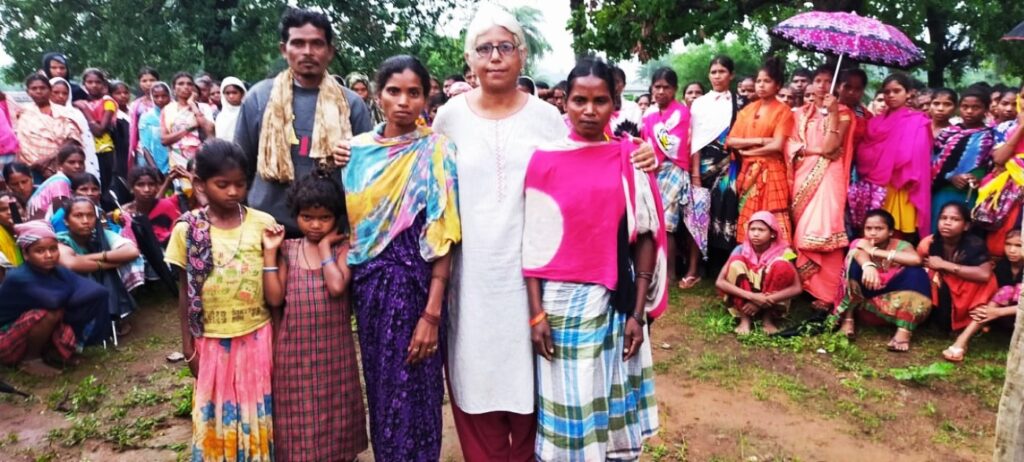
After these killings, do the police return the bodies to the families?
Over the years I have seen that mostly they do, though sometimes there are delays, deliberate or otherwise. I have also witnessed that in some instances, especially in fake encounter cases, the security forces build undue pressure on the family to do the last rites quickly by coming to the village and even the cremation ground to ensure that this happens.
Why do the police delay or refuse to return bodies?
Sometimes a delay may be innocent when despite displaying the photo and identity (where available) of the deceased, relatives have not come to claim the dead body soon. However, at times the delay seems deliberate when a profile photo of the deceased has not been circulated immediately but after days. Meanwhile, due to inadequate storage facilities in the district hospitals, the body decomposes beyond recognition. In such a situation, one suspects foul play.
From 22 to 27 May 2025, I was witness to what can be understood as an example of deliberate delay. On 20 May, in the Abujhmad forests of Narayanpur district, a major encounter occurred that claimed the lives of 28 Maoists. A Maoist press release later stated that one body was taken by them. The remaining were brought by the police to Narayanpur and kept in the mortuary of the district hospital. The mortuary was without a freezer facility. On 22 May, I accompanied the family members of deceased Maoist Ugendra alias Vivek from Warangal. I was requested to help them since they could not speak Hindi. In the course of the next few days, four other families came from Telangana and Andhra Pradesh. Amongst them were family members of two senior Maoists, Keshav Rao alias Basvaraju, General Secretary of the CPI(Maoist), and Sajja Venkata Nageswara Rao alias Naveen. These five families also produced the necessary identification like Aadhar cards, as did families of deceased Maoists from Bastar villages. But while Bastar bodies were handed over as per procedure, families from Telangana and Andhra Pradesh were kept waiting without being given credible information and harassed for days. On the 27th they were told that the bodies had decomposed and they should be cremated in Narayanpur. The families refused since they had brought freezer ambulances at great expense from their villages, where family members were waiting since they had not seen the deceased for decades after s/he left home. That evening, without showing the bodies to the next of kin, the police cremated them under heavy police presence on the sly. The Inspector General of Police, Bastar, later claimed that this was done because no legal claimants had come to take the dead bodies.
I believe that the decision to not hand over the dead bodies was political. The government feared that returning the bodies, especially of Basvaraju, to his native Srikakulam, would be met with public protests in rallies and meetings, since even though an encounter did take place, it is not clear whether Basvaraju’s killing was during combat or afterwards, when he could have been overpowered and arrested.
By choosing to deny access to the dead bodies the government has violated Article 21 of the Indian Constitution. Indian courts have read its scope to include the right to dignity of the dead which means that the dead must be treated with respect and their bodies cannot be mishandled, desecrated, or disposed of in a humiliating or arbitrary matter. Likewise, families have a right under Article 21 to perform the last rites of their loved ones according to religious customs. Denying this without lawful cause can be considered a violation of individual dignity and cultural or religious freedom.
Has anyone taken legal action regarding the treatment of the dead?
I expect family members of Basvaraju and others may do so. Though after the public outcry following the police cremation of Basvaraju and others, in subsequent encounter instances like the killing of central committee member Sudhakar and Bhaskar in June, bodies were handed over to the families without delay.
Do you see Operation Kagar as part of a broader pattern of militarized governance in tribal, resource rich areas?
Absolutely. The government has signed several opaque MOUs with corporations for mining. These agreements have reached a point where delays are no longer acceptable. Operation Kagar seems to pave the way for corporate takeovers, especially by companies like Adani. For instance, NMDC has already exhausted one hill and is now eyeing another, triggering protests. Mining politics is the real context.
How do you interpret the Maoists’ declaration of their willingness for a ceasefire now?
The Maoist willingness for a ceasefire and peace talks reflects their assessment of their own strength. But the state is not acceding and instead is using this opportunity to intensify its offensive and physically eliminate all Maoist leaders and cadres. Civilian deaths are dismissed as collateral damage.
In the absence of Maoist resistance, do you expect new forms of tribal resistance to emerge?
Adivasis of Bastar have a long history of resistance, including during British rule, as in other Adivasi areas of the country. New political formations and movements are likely.
The Moolvasi Bachao Manch, a youth-led mass movement that was functioning through open and democratic means since 2021 was banned in October 2024. The ban is for one year but is likely to be renewed. Many leaders and activists of the MBM are now in jail under the UAPA and other Acts. While independent mass movements are the need of the hour in Bastar, with growing militarization dissent remains a challenge.
Should the government initiate dialogue with the Maoists, especially now that they’ve declared a ceasefire?
Yes, absolutely. The CPI(Maoist) has expressed willingness for a ceasefire and a political dialogue through press releases six times so far since the end of March. But the government has not responded positively. The central and state governments have maintained that the only way out for the Maoists is for them to surrender. Earlier, it was being said that Maoists can come for talks, but without mediators, which is dangerous since some have been killed in such situations before.
We are living in times when corporations are taking over through democratic structures. Prime Minister Narendra Modi, Amit Shah, and their party, the BJP, are central to this change. Remember whose plane Modi, then Chief Minister of Gujarat and Prime Minister-elect, flew to Delhi in after winning the general elections in May 2014—that says it all. Our democracy is being subverted by fascist Hindutva forces. This is a dangerous moment in Indian history, and we must all wake up to it.
